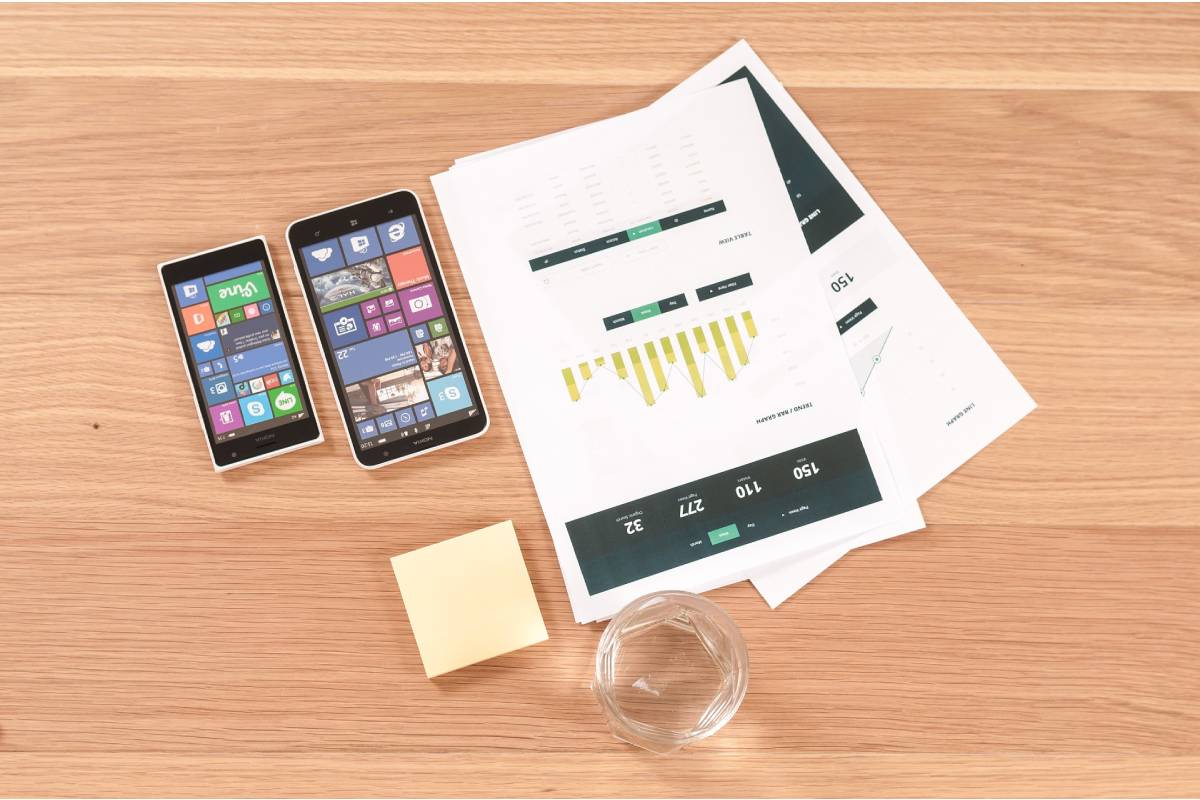

UX Design Process: A Complete Guide – Computer Tech Reviews
UX Design: The Secret Sauce to Sky‑High Rankings
When you’re aiming to climb the SERP ladder, UX isn’t just a nice‑to‑have feature—it’s the secret weapon that keeps visitors glued to your site instead of running to that ad‑free competitor. Let’s break down the recipe that turns a bland webpage into an unforgettable user experience.
1. Start with User Research: Get Inside Their Heads
- Identify who you’re building for. Think beyond age or job title—what problem are they trying to solve?
- Ask: “What keeps them up at night?” The answer might reveal a sticky navigation or a missing FAQ.
- Keep your questions light. People love sharing stories more than answering a questionnaire.
2. Conduct User Interviews: Let Them Talk Straight
- Grab a coffee, sit down, and let them narrate their journey through your site.
- Spot pain points, humor, and emotional triggers. People often describe what they “feel” more than what they “see.”
- Remember: the less you talk, the more they talk.
3. Run Online Surveys: The Quick‑Poll Edition
- Short surveys keep the conversion rate high—think 2‑minute quizzes.
- Use sliders, yes/no, and emoji responses to add personality.
- Set a target: aim for 100‑200 responses before you dive into design.
4. Create User Personas: The Avatar Team
- Give each persona a quirky name (e.g., “Skeptical Sam” or “Digital Daisy”).
- Describe their goals, fears, and tech comfort level.
- Use them as living references while iterating your designs.
5. Wireframe & Prototype: Sketch, Test, Repeat
- Start with low‑fidelity wireframes to map out layout quickly.
- Move to clickable prototypes—tools like Figma or Sketch let you map interactions.
- Test with real users. Watch them try elements; the “aha” moments or ‘uh‑oh’ moments guide the next tweak.
6. Pro Tips for Intuitive UX
- Keep it simple. Drop unnecessary buttons—less is often more.
- Prioritize content. The most crucial information should be front‑and‑center.
- Iterate fast. Embrace failure. If something doesn’t work, fix it immediately.
- Use micro‑interactions. A gentle animation for a button press can delight users.
- Accessibility matters. Ensure font sizes, contrast, and screen‑reader support.
Conclusion: Happy UX = Happy Rankings
When users navigate your site with ease, they stay longer, share more, and Google notices. So invest in UX now, and watch your site climb the rankings while keeping everyone smiling.
Start with researching your user:
Why You Can’t Ignore User Research (Even If You’re a Tech‑Nerd)
Yo, you’ve spent the last three coffee‑sated hours tinkering with your UCX design, and you’re pretty sure it’s slick, right? Think again. Unless you look at things through your users’ eyes, your masterpiece is likely to crumble faster than a cookie dropped on a hot floor. Here’s the low‑down on why user research is the secret sauce behind all rock‑star UX.
1⃣ Know Who You’re Talking To
- Every business speaks a different language. One niche might scream “aspirational,” another just wants efficiency.
- B2B vs. B2C: Corporate heroes often care about integration and reporting, while everyday folks crave simplicity and instant gratification.
- Without knowing your crowd, you’re basically shooting arrows in the dark—wasteful and, frankly, embarrassing.
Let’s Get Personal
Imagine you’re building a fitness app. For enthusiastic athletes, advanced metrics are king. For casual users, a simple “walk‑the‑door” reminder wins the day. Tailoring the experience is the only way to boot up engagement.
2⃣ Map Their Journey (Not Your One)
- Ask: “How do they like to find what they’re looking for?” Do they prefer a search bar? Do they navigate by icons?
- Spot the pain points—those stubborn spots where users lose their minds. Show empathy. Walk in their shoes and come back with solutions.
- Remember: A great UX isn’t just about slick buttons; it’s about making every interaction feel like a hug, not a chore.
Feeling the User’s Frustrations
When users encounter a glitch, they’re not just annoyed—maybe they’re shocked. Think about that moment when a page takes five minutes to load and the user is digging for that coffee mug on the desk. The anxiety hurts, and the experience hurts more. The goal? Make that moment an “aha!” instead of a “oh no.”
3⃣ Get the Right Help
- Calling in a UX Agency can breathe life into your research efforts. They’ve got the tools, the experts, and an entire playbook to help you spot what users are thinking.
- The agency’s fresh perspective can point out blind spots you’ve unknowingly built into your design.
- Think of them as your personal detective—uncovering hidden desires and stepping stones to a conversion‑friendly journey.
Bottom Line
If you want your website to perform, you have to make sure it looks good, feels good, and works good for the people who actually use it. No one loves a site that’s a maze and ignores the user’s needs. Remember: user research isn’t just an extra step; it’s the cornerstone of every successful UX. So, get out there, talk to folks, and let the research guide you—the version of you that isn’t just proficient but proficient & playful.
What should you involve in your User research?
Get Your UX Game on Point: The Ultimate User Research Kick‑Start
Before you dive into wireframes, prototypes or fancy animations, you’ve got to know who’s actually going to use your product. User research isn’t just a buzzword—it’s the backbone of a killer UX design. Below is a breezy, step‑by‑step guide that turns the dreaded “research” process into a fun, strategic adventure.
1. Why User Research Rocks
- Uncover Real Needs: You’ll discover hidden pain points that a design spec alone can’t reveal.
- Save Time & Money: Spot issues early and avoid redesigning ships after launch.
- Build Credibility: When stakeholders see real data, they’re more likely to sign on.
2. Set the Stage: Pre‑Research Prep
- Define Your Goals: What questions are you trying to answer? (e.g., “How do users navigate the checkout?”)
- Choose the Right Methods: Pick between interviews, surveys, diaries, usability tests—mix it up if you’re feeling adventurous.
- Recruit the Squad: Find real users in your target demographic. Think: “Owners of an iPhone who binge‑watch Saturday morning cartoons.”
- Craft Your Script: Write a concise guide. Keep questions open‑ended, and remember—less is more.
3. Rolling Out the Research
When the lights turn on, you’re ready to gather fresh data. Here’s a friendly cheat sheet for each method:
Interviews
- Set up a comfy spot, preferably, a coffee shop—makes people feel at ease.
- Ask probing questions. “Tell me about the last time you….”
- Record (with permission). You’ll need this for later deep dives.
- Spark follow‑ups: “Why did you feel that way?”
Surveys
- Keep it short—no longer than 5 minutes.
- Use scales (1‑5) for quick feedback.
- Add a witty comment: “Would you rate your experience as a ‘joyride’ or a ‘cliff hanger’?”
Usability Tests
- Ask participants to complete real tasks (e.g., “Add a new item to cart”).
- Observe their body language—will they hesitate or jump straight in?
- Collect metrics: time on task, error rates, completion success.
4. Making Sense of the Chaos
Now that you’ve collected data, it’s time to find meaning in the madness. Here’s how to stay organized:
- Transcribe & Code: Highlight recurring themes—“confused on the checkout page,” “tired of long waits.”
- Create Personas: Turn data points into relatable characters: “Busy Mom Maya” or “Student Sam.”
- Map Empathy Journeys: Visualize user feelings at each touchpoint.
- Prioritize Pain Points: Use a simple matrix: impact x effort. Tackle high‑impact, low‑effort fixes first.
5. Share the Love
Present your findings in a way that clicks with executives and devs alike:
- Use visuals—charts, quotes, persona pics.
- Keep the tone light: “Here’s a short story that will make you chuckle and think.”
- Wrap with a call to action: “Let’s fix the checkout barrier by next sprint.”
Pro Tips to Keep the Process Fun
- Have a snack station—people love a good bite while answering questions.
- Use real names for personas—it builds human connection.
- Reward participants with a small token (coffee, swag, or even a digital thank‑you). Appreciation goes a long way.
There you have it—a friendly, human‑centered recipe for solid user research. Turn the data into empathy, and watch your UX design shine like a well‑crafted lighthouse.
Consider taking user interviews:
Getting Inside Your Users’ Heads: The Scoop on Interviews
Ever wondered what makes your visitors tick while they’re navigating your site? One of the best ways to crack that code is by diving into user interviews. They’re like a backstage pass to the real, unfiltered thoughts of your audience.
Why Interviews Are a Gold Mine
When you sit down with users, you’re not just collecting data—you’re uncovering the hidden pain points that could make or break their experience. Think of it as a detective job: every question helps illuminate the mystery of why someone might drop off or get frustrated.
Key Questions to Ask
- What’s your first impression? – Gauge the instant visual or emotional reaction.
- How do you usually find your way around? – Unpick the navigation instincts.
- What obstacles have you bumped into? – Identify recurring roadblocks.
- What would you change to improve the flow? – Get direct suggestions for tweaking the interface.
- Any feature you wish was easier to use? – Highlight potential killer features.
Getting Real, Not Pretend
Keep the vibe casual—no stiff interrogations. Let the conversation feel like a chat over coffee. This lowers the guard and often brings out candid insights.
Turn Findings into Fixes
When you spot common complaints—say, a confusing search bar or a dead-end checkout—translate those into actionable design changes. It’s the fastest route from user mouths to better UX.
Wrap‑Up: More Than Just Feedback
User interviews aren’t a one‑off. Use them as an ongoing dial to keep your product aligned with real needs. And remember: every frustrated click is a chance to smile your way out of a problem—turn those insights into triumphs!
Switch to online surveys:
Unlock Audience Secrets with Online Surveys
Think of online surveys as your digital detective kit. They let you dive deep into what folks actually care about—without the awkward face‑to‑face awkwardness.
Why Go Digital?
- Instant Reach: Reach thousands in a blink—no postal delays or hand‑written postcards.
- Hassle‑Free Answers: Let users fill out their thoughts in their own time, from coffee shop to the couch.
- Data‑Rich: Every click, every checkbox becomes a clean data point ready for analysis.
How to Set It Up
- Choose the Right Questions: Keep it short, sweet, and to the point—your users will thank you.
- Use a Clean Form: A tidy interface ensures high completion rates.
- Offer Incentives: Free swag or a discount keeps people coming back for more.
In short, if you want to know what makes your audience tick, roll out an online survey. It’s efficient, fun, and all the less–traditional options? They’re all put in the back pocket.
Consider creating a user persona:
Getting to Know Your Users: The Mighty Persona
So, What’s a Persona?
Picture a persona as the ultimate sidekick you create for your design journey. It’s a fictional, yet data‑backed, representation of the people who’ll actually interact with your product. Think of it like crafting a character in a story—only this one helps you avoid designing a sleek but user‑unfriendly interface.
Why Personas Are Your Design Swiss Army Knife
- Targeted Design: Personas point you straight at the folks who really care about your product—no wasted effort on random “everyone.”
- Empathy Boost: When you walk in the shoes of your persona, you’ll spot pain points you’d otherwise miss.
- Feature Prioritization: Need to decide what’s hot and what’s not? Personas tell you where to put the spotlight.
- Communication Clarity: Share a persona with stakeholders and watch the discussion shift from “we think it’ll work” to “we know exactly why it will.”
How to Nail Your Persona (Without Losing Your Mind)
Just like whipping up a tasty smoothie, the right mix of research, data, and imagination yields a persona that sings.
- Collect the Facts: Surveys, interviews, analytics—gather the juicy details about your users’ behaviors, goals, and pain points.
- Draft the Profile: Give your persona a name, age, job title, and even a quirky hobby. Make them feel real.
- Map Their Journey: Outline their thoughts, actions, and emotions at every touchpoint.
- Validate the Gist: Toss the persona back to real users for sanity checks. If they nod, you’re on the right track.
- Renew Regularly: As markets shift, so do users. Keep your personas fresh—just like your coffee.
Ready to Turn Your Persona Into a Design Hero?
With a vivid, data‑driven persona in hand, you’re set to build UX that feels tailor‑made, feels intuitive, and—and most importantly—feels like it was made with love.
Wireframing and prototyping the design:
Build Your Site Blueprint
You’ve got your audience sorted out, so it’s time to roll up your sleeves and sketch the framework that will make your site pop. Think of it as laying out the blueprint of a digital home where every click feels like a comfortable step forward.
1. Keep UX Stickin’ to the Eye
What’s the point of a shiny design if nobody can navigate? An intuitive user experience is the secret sauce that keeps visitors coming back. Break it down into these bite‑size priorities:
- Clear Paths – Every page should feel like a clear road. No confusing detours.
- Speedy Feel – Fast loading times keep the friction low and the frustration high.
- Interactive Feedback – Let users know their actions have an impact; a subtle bounce or a tooltip can do wonders.
- Consistency is Key – Stick to one font, color palette, and button style.
2. The Architecture that Grows
Your website’s skeleton must be robust enough to support tomorrow’s features. Let’s dive into the deep‑end of information architecture:
2.1. Map Out Your Content Maps
Picture a mind‑map of your site’s categories and sub‑categories. This chart helps you answer:
- Which content should live where?
- How can users jump from topic to topic without fumbling around?
- Where should the hollows for future expansions lie?
2.2. Seamless Navigation:
Every menu bar and breadcrumb trail should feel like a living guide:
- Simplify the main menu – keep it to a handful of core sections.
- Use breadcrumb trails for easy backtracking and context.
- Make dropdowns look less stressful: minimal items, clear headings.
2.3. Reduce Support Costs with Smart Design
When the user journey is crystal clear, you’ll see a visible drop in user queries and support tickets. Some quick wins:
- Integrate an FAQ pop‑up that addresses common pain points.
- Create a self‑service search bar with intelligent suggestions.
- Use tooltips that reveal more details on hover – no flashing your way.
Next Up: Wireframes & Prototypes
Now that you’ve sketched the high‑level architecture, it’s time to visualize the interactions. Draft wireframes first – low‑fidelity sketches that capture placement and structure. Once you’re happy, move to prototypes:
- Use clickable prototypes to test flows before writing code.
- Gather quick feedback from real users to catch any confusing spots.
- Iterate – tweak an element here, re‑test there; keep the process agile.
Remember: the goal isn’t just a pretty interface; it’s a joyous, hassle‑free journey that keeps customers coming back. Let the design speak for itself with empathy, humor, and a dash of playful quirkiness. Good luck, and happy prototyping!
Tips that you should keep in mind:
Quick & Quirky Guide to a Killer UX
Planning to lay down a slick user experience for your site? Hold your horses – there are a few essential tricks you should fix in your mind before you hit that launch button.
- Device‑Friendliness Matters:
Make sure your site plays nice with phones, tablets, laptops, and even that quirky old desktop. Who’s got time for broken layouts? - Simplicity is Sexy:
A maze of menus and hidden options is like a fortune cookie with no answer inside. Keep it clean and straightforward. - Avoid Design Badasses:
Don’t sprinkle in a clunky architecture that feels like a tangled yarn basket. Structure should feel smooth and intuitive. - First Impressions Count:
The moment someone lands, they should feel like finding a golden ticket. Make it wonderful from the get-go. - Say No to Spammy Alerts:
Nobody likes a push notification screaming “Buy now!” from every corner. Keep alerts polite and relevant. - White Space: Your Friend:
Let space breathe – it turns a cramped site into a zen garden. - Collect & Use Feedback:
Invite critics, listen, and tweak. A responsive team beats a stubborn design. - Consistency Rules:
Colors, fonts, buttons – they should sing the same tune across every page. No off‑key surprises.
Bottom Line
With these pointers nailed down, your UX will feel like a perfectly curated playlist – smooth, well‑structured, and downright enjoyable for every visitor.
Conclusion:
Make Your UX Feel Like a Smooth Rideshare
Want your user interface to pack a punch without taking up too much space? Follow a few simple steps and you’ll have a sleeker design that actually works.
Step‑by‑Step Roadmap
- Trim the clutter: Strip away the extras to keep the core features front and center.
- Rely on real‑world testing: Let users point out hiccups so you can squash them quickly.
- Keep iterating: Tiny tweaks add up to a big difference in feel.
Why It Matters
A high‑performing UX is the secret sauce that turns ordinary clicks into loyal fans. Throw in a dash of humor and a splash of emotion, and you’re not just designing a product—you’re creating an experience.







